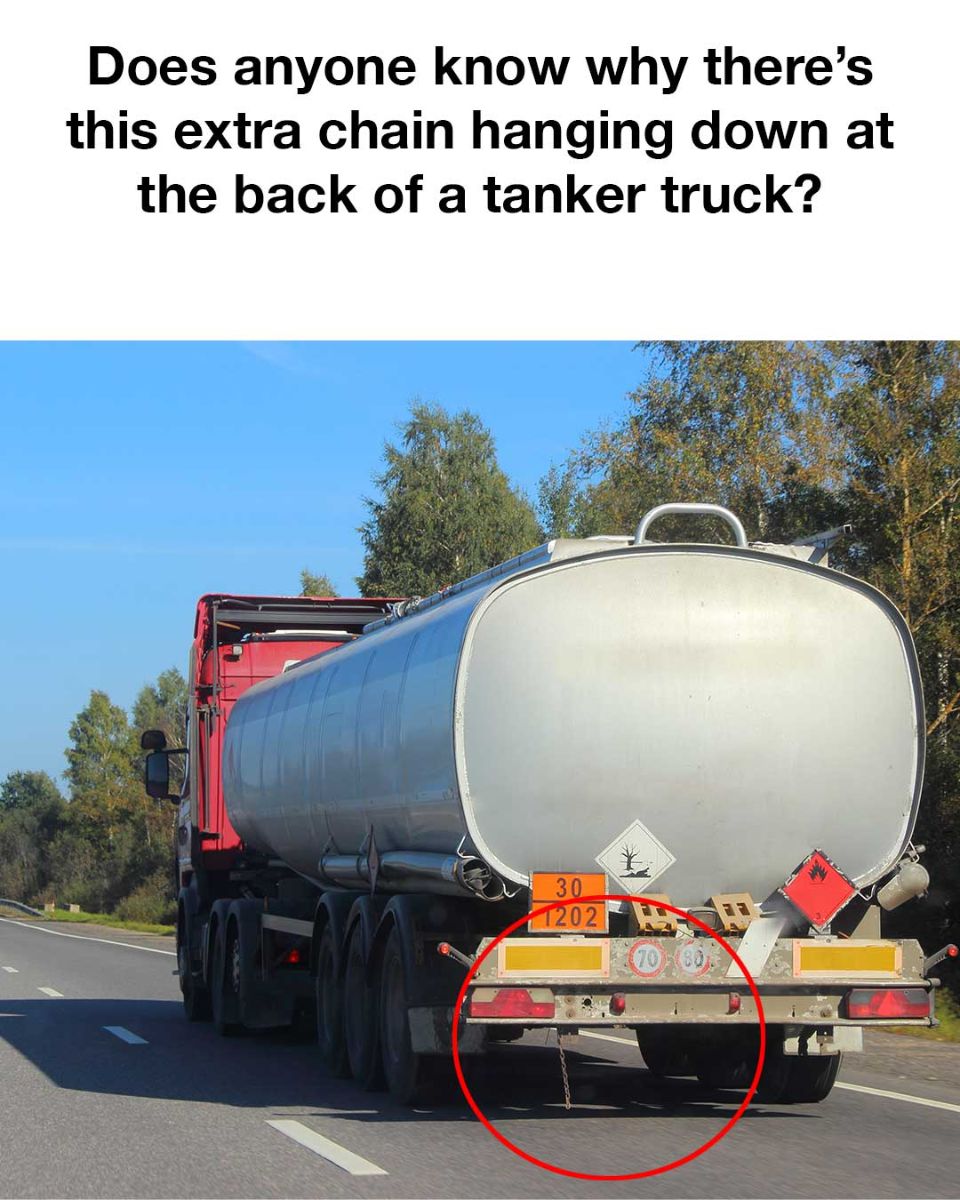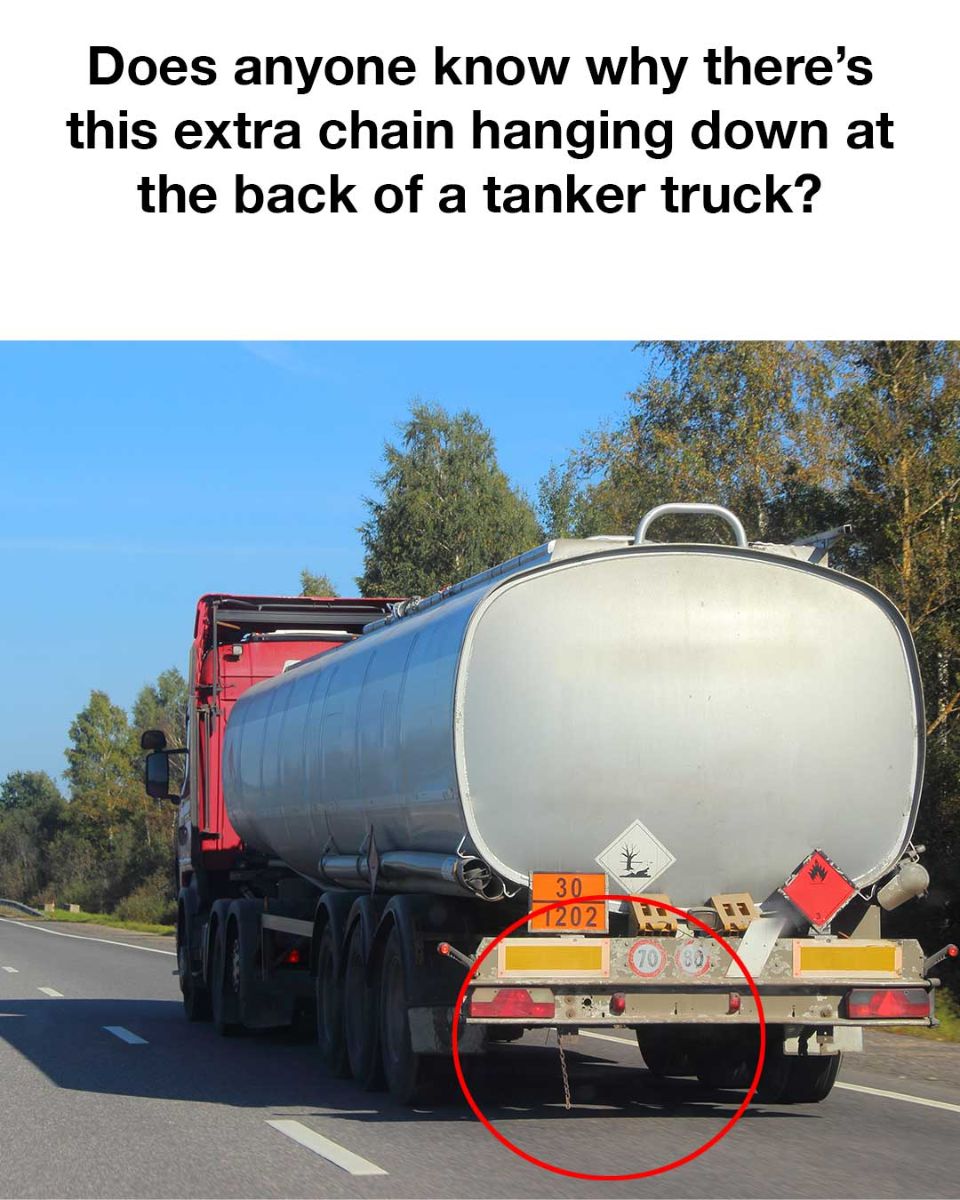
Tanker trucks are specialized vehicles designed to transport liquids and gases, including fuel, chemicals, and food-grade products. Ensuring the safe transport of these often hazardous materials is paramount. One safety feature that may go unnoticed by the general public is the grounding chain—a seemingly simple component with a critical function.
Purpose of the Grounding Chain
The grounding chain, which hangs from the rear of many tanker trucks and drags along the ground, serves as a vital safety device. Its primary function is to dissipate static electricity that accumulates during transit. As the liquid cargo moves within the tank, friction generates static charges. If not properly discharged, this static electricity can ignite fuel vapors, leading to fires or explosions. The grounding chain provides a continuous path for static charges to safely dissipate into the earth, thereby mitigating this risk.
Historical Context
The implementation of grounding chains became standard practice following incidents where unexplained fires during fuel transportation were attributed to static electricity buildup. Investigations revealed that without a grounding mechanism, tanker trucks carrying flammable substances were susceptible to static-induced ignition. This realization led to the adoption of grounding chains as a straightforward and effective safety measure.
Mechanics of Static Electricity in Tankers
Understanding the generation of static electricity within tanker trucks highlights the importance of grounding chains. The movement of liquid cargo creates friction, resulting in an electric charge. Many tanker interiors are lined with non-conductive materials to prevent contamination, which inadvertently inhibits the natural dissipation of static charges. Without a grounding path, these charges can accumulate and discharge upon contact with conductive objects, potentially causing sparks near flammable vapors. The grounding chain addresses this issue by continuously releasing static electricity into the ground.
Regulatory Standards
In the United States, agencies such as the Department of Transportation (DOT) and the Occupational Safety and Health Administration (OSHA) enforce stringent regulations for the transportation of hazardous materials. These regulations mandate measures for controlling static electricity, including the use of grounding equipment like grounding chains. Non-compliance can result in significant fines and increased liability in the event of an accident.
Advancements and Alternatives
While grounding chains remain prevalent, technological advancements have introduced additional methods for managing static electricity. Some tanker trucks are equipped with retractable grounding cables that drivers attach to designated grounding points during loading and unloading. Other innovations include the use of static dissipative additives in fuels and anti-static linings within tanker interiors. Despite these developments, the grounding chain endures as a reliable, cost-effective safety feature.
Addressing Misconceptions
There are misconceptions regarding the purpose of grounding chains. Some view them as decorative or believe they aid in vehicle stabilization. In reality, their sole function is to discharge static electricity, thereby preventing potential ignition of flammable vapors. The continued use of grounding chains underscores their effectiveness in enhancing the safety of fuel transportation.
In summary, the grounding chain on tanker trucks plays an indispensable role in preventing static electricity buildup and ensuring the safe transport of hazardous materials. This unassuming component exemplifies how simple engineering solutions can have profound safety implications in industrial operations.
